- HOME
- About AIS
- Study Abroad Program
- Clare Hall, University of Cambridge Summer Visiting Student Program Report
Clare Hall, University of Cambridge Summer Visiting Student Program Report
2016 Academic Year
Daigo Terutsuki: Doctoral Student, Department of Advanced Interdisciplinary Studies, Graduate School of Engineering, The University of Tokyo
Overview
The purposes of my visiting the University of Cambridge were to visit the Hitachi Cambridge Laboratory (HCL) and discuss the future development of new biosensor devices with researchers there. The author is currently involved in the biosensor project in the Research Center for Advanced Science and Technology (RCAST). To expand this project, I planned to visit HCL, which achieves remarkable research results in the field of electronic devices, and other institutes around the University of Cambridge. In this visiting student programme, participating in international summer programmes of the University of Cambridge was required; however, it became an option from this year. Therefore, I planned to stay with HCL as a summer laboratory programme student for one month.
Clare Hall
In this visit, I stayed in Clare Hall, which is one of the colleges of the University of Cambridge for visiting students. Clare Hall was founded in 1966 primarily to host visiting researchers and graduate students. Once I arrived at Clare Hall, I really came to like its friendly and informal atmosphere. Clare Hall has no "high table". Another special feature is that Clare Hall has a swimming pool, because it purchased the Cambridge home of Lord Rothschild.
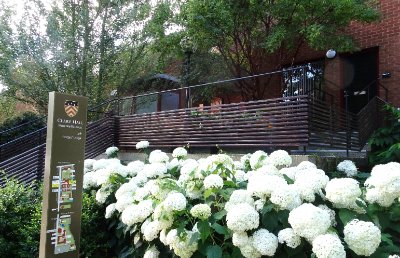
Entrance of Clare Hall
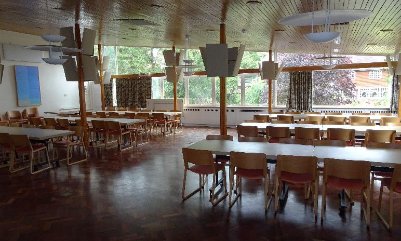
Dining room of Clare Hall
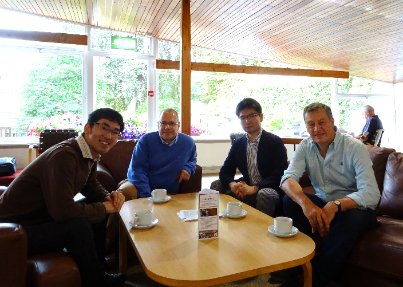
At the lounge of Clare Hall (From left to right: the author, Dr Iain Black, Mr Tanimura, Dr Ian Farnan)
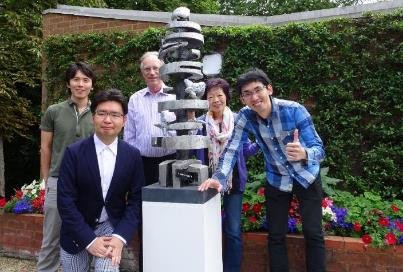
At the courtyard of Clare Hall
(From front left to right: Mr Tanimura, the author From back left to right: Dr Iwata, Prof David Cope, Mrs. Cope)
The year 2016 marks the 50th anniversary of Clare Hall, and various anniversary events were held for this very special time. RCAST prepared a celebration card for me to present to Prof David Ibbetson, who is the Clare Hall President. In Clare Hall, I met various visitors, such as Prof David Cope, who is a Foundation Fellow of Clare Hall and RCAST fellow; his wife, Mrs Cope (Reiko-san); and Dr Naoya Iwata, who specializes in ancient philosophy. The dining room of Clare Hall served excellent foods and broke down my prejudice that "British food is bad". Clare Hall has a calm lounge with many comfortable sofas, where people enjoy coffees and conversation after lunch. I would like to be a life member of Clare Hall in the future.
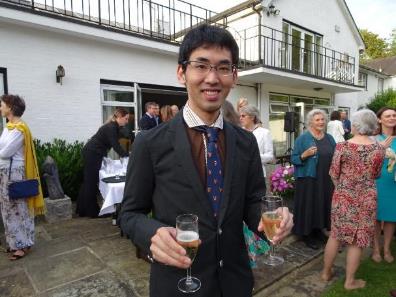
President's 50th Anniversary Drinks Reception and Buffet.
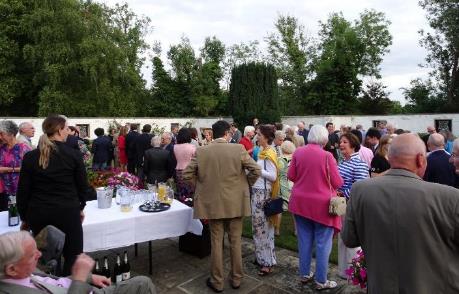
I wore a special tie of Clare Hall.
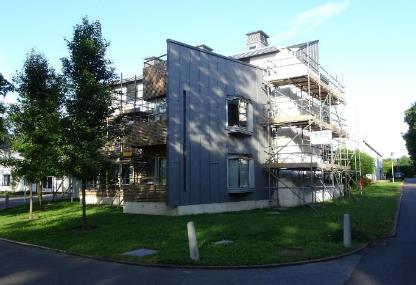
Salje Building (Overview)
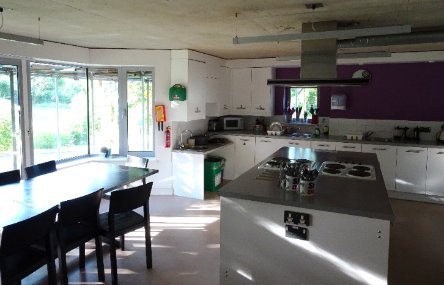
Salje Building (Kitchen)
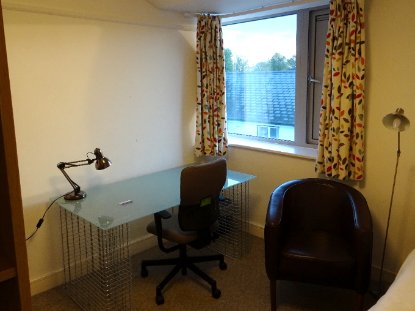
Salje Building (Student room)
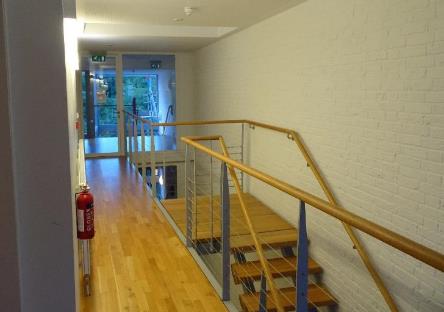
Salje Building (Inside of the building)
I stayed Salje Building. There is the name "RCAST The University of Tokyo" in the memorial plaques in the ground floor.
Hitachi Cambridge Laboratory
HCL was established in 1989 at the Cavendish site of the University of Cambridge. Its mission includes the promotion of fundamental research to lead the world and improving Hitachi's international brand images. HCL is highly international; it comprises twenty researchers gathered from eleven countries. HCL has achieved outstanding results, especially in the fields of spintronics and quantum information processing (QIP). Their results have been published in prestigious journals such as Nature and Physical Review Letters. The present laboratory manager is a British, and the deputy laboratory manager is a Japanese from Hitachi, Ltd. Mr. Koichi Kuroda (Hitachi High-Technologies) also stayed at HCL for overseas training. I also had active discussions with Dr Koichi Watanabe, who is HCL's present deputy laboratory manager. Dr Watanabe introduced me with an overview of HCL, and we discussed future research collaboration between HCL and RCAST. I has multiple discussions on spintronics applications for biosensors with Dr Pierre Roy, who specializes in spintronics. Before my stay at HCL, I thought that spintronics was unrelated to biosensors, but I realized that spintronics has various possibilities for new biosensor devices. Dr Fernando Gonzalez-Zalba, who specializes in single-electron devices and QIP, introduced me to the experimental facilities of HCL and explained the research in quantum dots and single-electron transistors (SETs). We also discussed SET applications for biosensing. Moreover, I had an opportunity to speak with Prof Henning Sirringhaus, who is a world authority on organic semiconductors and the Hitachi Professor of Cavendish Laboratory.
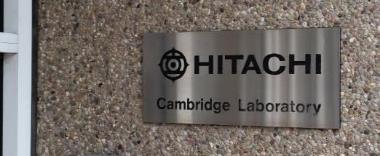
Hitachi Cambridge Laboratory
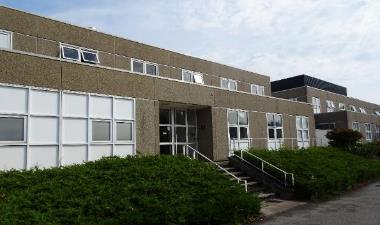
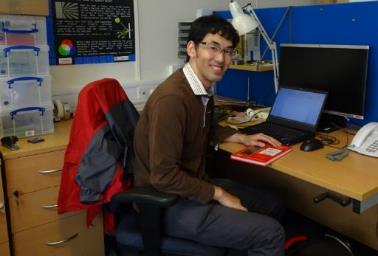
At the office of HCL
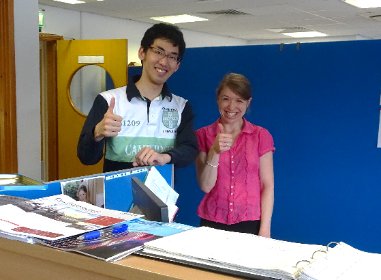
At the reception of HCL (From left to right: the author, Mrs Emma)
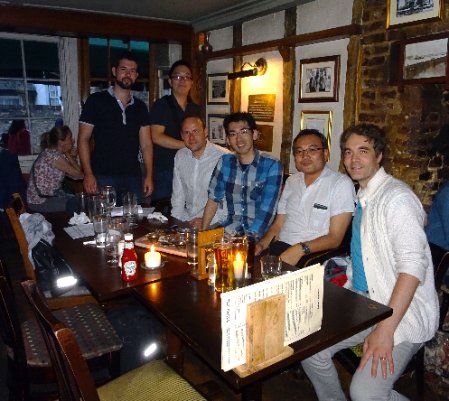
At the memorial seat of the Eagle, Cambridge
(From left to right: Dr Gonzalez-Zalba, Mr Kuroda, Dr Brossard, the author, Dr Watanabe, Dr Roy)
MRC Laboratory of Molecular Biology
I visited the Medical Research Council, Laboratory of Molecular Biology (MRC, LMB) and spoke with Dr Kiyoshi Nagai, who is a group leader for the Structural Studies Division. Dr Nagai joined MRC LMB as a postdoc in 1981 and has continued research up to the present day after being promoted to group leader in 1987. MRC has four divisions and an interesting evaluation system. To conduct long-term research, MRC does not focus on individual evaluation of each researcher, but instead evaluates the divisions themselves. This unique evaluation system protects researchers who tackle time-consuming research fields. In MRC, researchers can share the large equipment, and the person who bought it does not monopolize. In the field of structure biology, for example, many researchers are breaking into the field of cryo-microscopy (cryo-EM). However, cryo-EM equipment generally costs approximately GBP 3 million, and it is almost impossible for individual researchers to purchase it. MRC, on the other hand, shares its cryo-EM equipment, and many researchers use it for their studies. As a result, they can publish in top journals, such as Nature. The MRC systems enable us to achieve excellent research goals. Dr Nagai also gave me important advice for applying for research grants and labs overseas. I felt I had a productive visit.
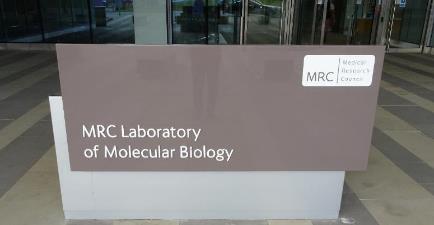
Entrance of MRC Laboratory of Molecular Biology
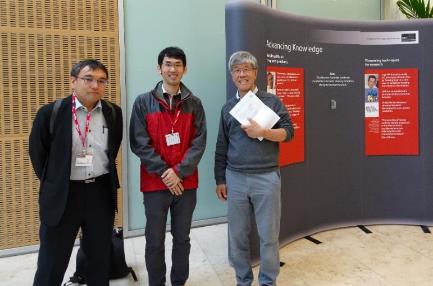
At MRC LMB
(From left to right: Dr Watanabe, the author, Dr Nagai)
Department of Engineering
I visited Dr Fumiya Iida, who is the PI of the Biologically Inspired Robotics Laboratory in Dyson Centre, Department of Engineering, the University of Cambridge. Dyson Centre was established by a donation from Sir James Dyson, who is famous for Dyson vacuum cleaners. Research topics of Dr Iida are based on bio-inspiration and have much in common with the Kanzaki lab. He studies energy efficiency for robotics using hopping robots, soft material for grippers, and 3D printing systems with thermoplastic materials. He also discussed research trends in soft robotics around the world. I really enjoyed his unique robots and realized the impacts and future possibilities of bio-inspired and bio-hybrid devices.
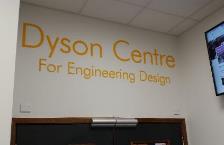
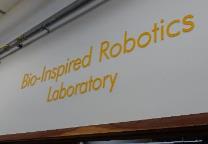
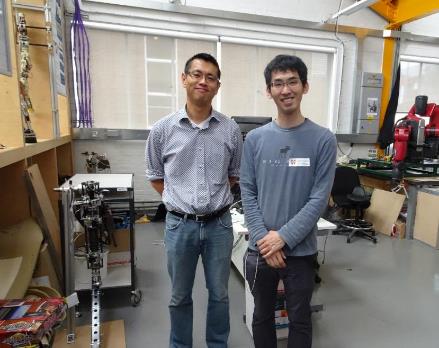
At Dyson Centre, Department of Engineering (From left to right: Dr Iida, the author)
University of Edinburgh
I visited the Institute for Bioengineering (IBioE), University of Edinburgh, Scotland, and discussed biosensing by using ion sensitive field effect transistors (ISFETs) with Prof Alan Murray, who is the head of IBioE. Dr Stewart Smith, who is a lecturer at IBioE, kindly introduced him to me. Prof Murray is a specialist in biomedical sensing and is leading the Implantable Microsystems for Personalised Anti-Cancer Therapy (IMPACT) research programme, which is funded by the Engineering and Physical Sciences Research Council (EPSRC). He was a very open and sociable person, and we actively discussed ISFET biosensing. Our research goals are different, but our research tools are the same. Therefore, we have the same challenges and advantages, and I believe that we can have further discussion and collaborate in the future.
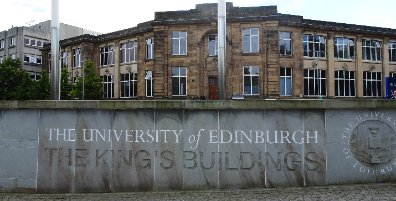
The King's Buildings, University of Edinburgh
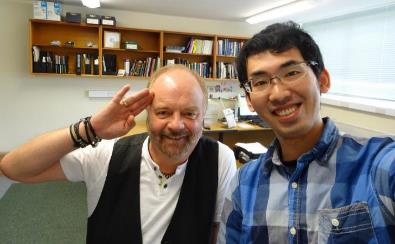
At the Institute for Bioengineering (From left to right: Prof Murray, the author)
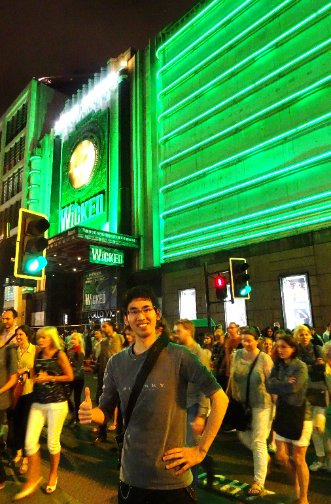
After watching "Wicked" at the Apollo Victoria Theatre
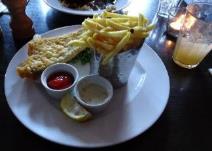
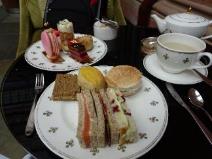
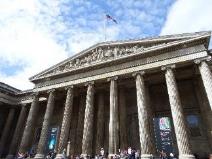
Miscellaneous notes
I stayed at Clare Hall and HCL at Cambridge during the weekdays, and visited London on weekends. In this visit, I watched "Wicked", which tells the untold story of the Witches of Oz and is an incredibly popular musical in London. I would strongly recommend that you to listen to "Defying Gravity" at the Apollo Victoria Theatre. Buckingham Palace is open to the public during the summer, and I visited the exhibition "Fashioning a Reign: 90 Years of Style from The Queen's Wardrobe" in the palace. I also tried afternoon tea after walking around in the British Museum, but I became full before trying the scones. If you book dinner, please be careful.
Looking back upon this program, I really enjoyed the UK because I could visit outstanding institutes and discuss various topics with leading researchers, and of course, do some sightseeing. I firmly believe that I achieved and exceeded my goals of this visit in spite of the short stay. Finally, I would like to give heartfelt thanks to Prof Ryohei Kanzaki, members of the strategic planning office of RCAST and members of Hitachi The University of Tokyo Laboratory. I would also like to express my gratitude to the professors who accepted my visit, members of Clare Hall and members of HCL.




